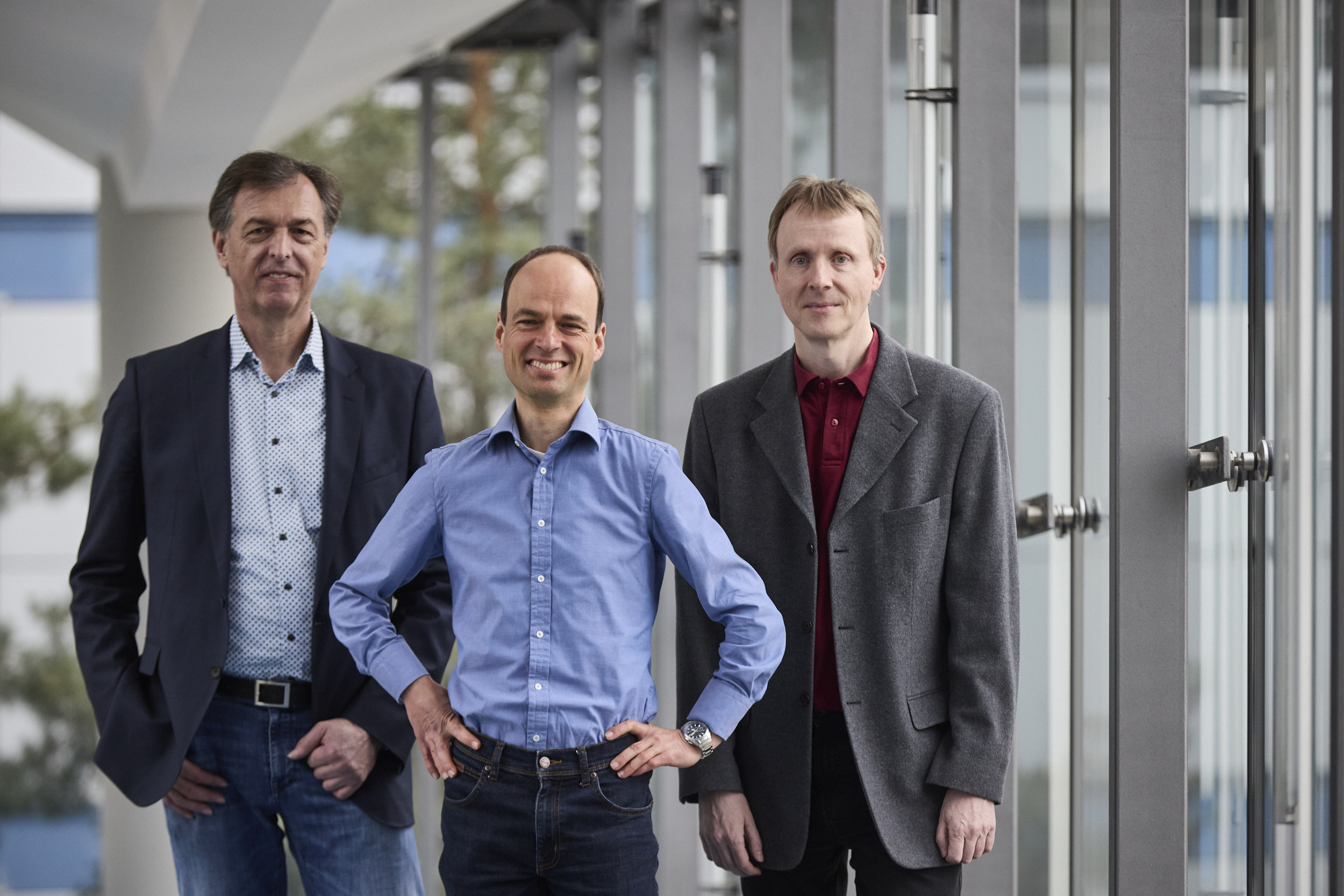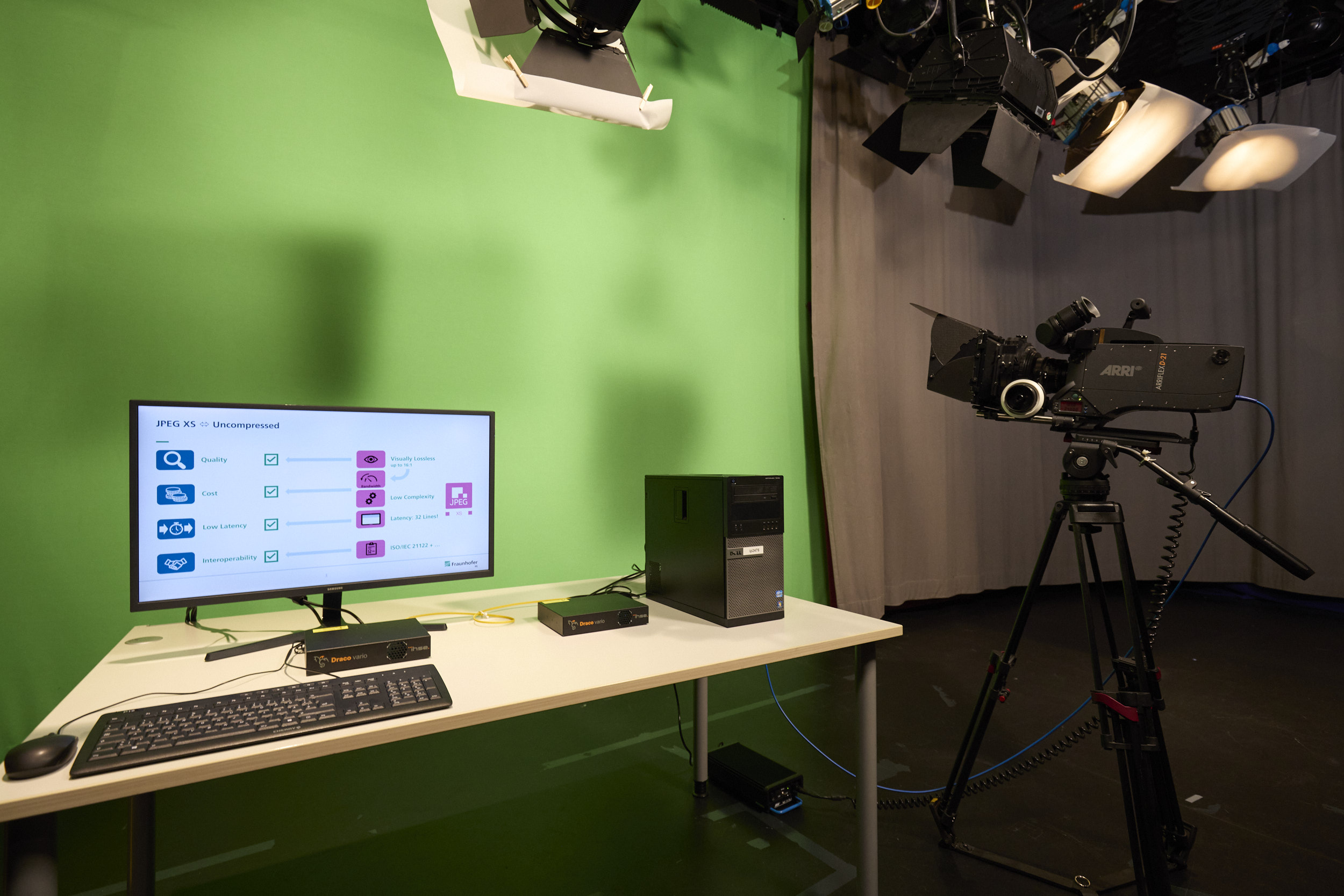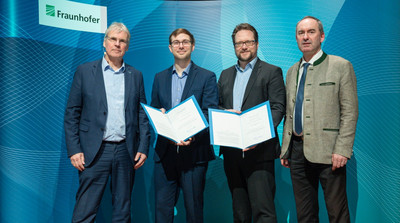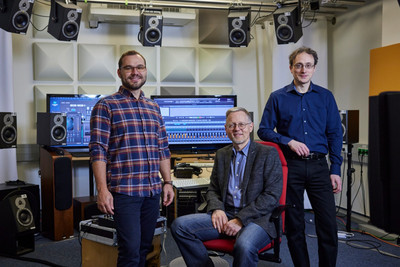Joseph von Fraunhofer Prize 2025 goes to Fraunhofer IIS at the Nuremberg Metropolitan Region
The research team from Erlangen was recognized for its innovative “JPEG XS” video codec: A pioneering standard for professional “All-IP” video production.
Existing video codecs involve accepting longer lag times or quality losses during transmission of image data in production environments. They also require a relatively large amount of computing power to decode the data, which means expensive hardware must be used and more energy is consumed. A team of researchers from the Fraunhofer Institute for Integrated Circuits IIS in Erlangen has now developed JPEG XS, a state-of-the-art and forward-looking image compression format that transfers high-quality images with minimal latency, low resource use and almost lossless image quality. For this innovative project, the researchers were presented with the Joseph von Fraunhofer Prize for 2025 at the Fraunhofer annual assembly.
The image quality of videos has risen steadily in recent decades. But higher quality also means larger volumes of data to be transferred. There are various reasons for this, including changes in viewer expectations and habits as playback devices continue to improve. This puts rising pressure on both costs and time in the production of professional TV and film content, even as the number of media channels and platforms in-creases. Even VR headsets or industrial applications from machine vision to autonomous driving have real-time requirements that conventional video codecs frequently cannot meet.
To resolve this challenge efficiently —not only in terms of the available hardware but also with an eye to energy and resources — and above all in as close to real time as possible, a team of researchers headed by Siegfried Fössel, Joachim Keinert and Thomas Richter from Fraunhofer IIS developed JPEG XS as a new ISO standard.
Development of JPEG XS as a new ISO standard
Superior-quality professional videos used to be transferred without compression via special interfaces such as serial digital interface (SDI), CoaXPress or low-voltage differential signaling (LVDS), which requires a point-to-point connection with coaxial or twisted pair cables. The stringent quality requirements made it impossible to compress the data without compromising high data rates. Complex transmission protocols were avoided. This resulted in transfer points with powerful converters to Ethernet computers, which slowed down workflows. “Traditional MPEG codecs aren’t suitable for this application, since they are geared toward high compression rates and acceptable quality. By contrast, JPEG XS was designed as a professional compression codec — known in the field as a mezzanine codec — to allow the transfer of high-quality videos up to 8k in production quality via Internet Protocol, or IP,” explains Keinert, who manages the Computational Imaging group at Fraunhofer IIS.
JPEG XS greatly accelerates the encoding and decoding of images. In film and TV production, JPEG XS enables efficient and above all rapid transfer and processing of image content, which addresses the mounting cost and time pressure involved in media production. “Low latency and high parallelizability make JPEG XS an ideal tool for multi-stage processing of video signals in real time. The codec is optimized for visually lossless compression. It supports color depth from 12 to 16 bits per color component, which means even video signals with high dynamic range can be transferred,” says Richter, Chief Scientist at Fraunhofer IIS.
With an extensive software and patent portfolio, Fraunhofer IIS has established an internationally recognized standard. “The new standard was developed as a visually loss-less codec that specifically considers the conditions of high-quality video transfer. Thanks to its thoughtfully designed algorithms, JPEG XS can be integrated into existing computer systems and can transfer high-resolution images via a low-cost Ethernet interface without any visible lag. This network technology is widespread, facilitating seamless integration into existing infrastructure,” notes Siegfried Fössel, head of the Moving Picture Technologies department at Fraunhofer IIS.
Various applications
In addition to its unique position as a technology for transmission of superior-quality images, JPEG XS also offers huge economic advantages for studio technology and other fields, such as machine vision and automotive applications. In the field of autonomous driving specifically, JPEG XS shows significant advantages in that the data rate for camera networking is reduced without adversely affecting analytical performance. The development and standardization of JPEG XS by Fraunhofer IIS, together with the extensive patents, will form a stable basis for the codec’s further development and commercial application.
All this makes JPEG XS a forward-looking technology that, thanks to its real-time transmission capability and high quality at high data rates, has the potential to considerably expand the market for professional video transmission and applications in the automotive industry, VR/AR and machine vision.
Joseph von Fraunhofer Prize
Since 1978, the Fraunhofer-Gesellschaft has awarded the annual Joseph von Fraunhofer Prize to its employees for outstanding scientific achievements in developing solutions for application-related problems. This year, three prizes, each worth 50,000 euros, were awarded to groups of researchers from different institutes.

© Fraunhofer / Piotr Banczerowski | Winners of the 2025 Joseph von Fraunhofer Prize: Siegfried Fössel, Joachim Keinert and Thomas Richter (from left) from Fraunhofer IIS.

© Fraunhofer / Piotr Banczerowski




